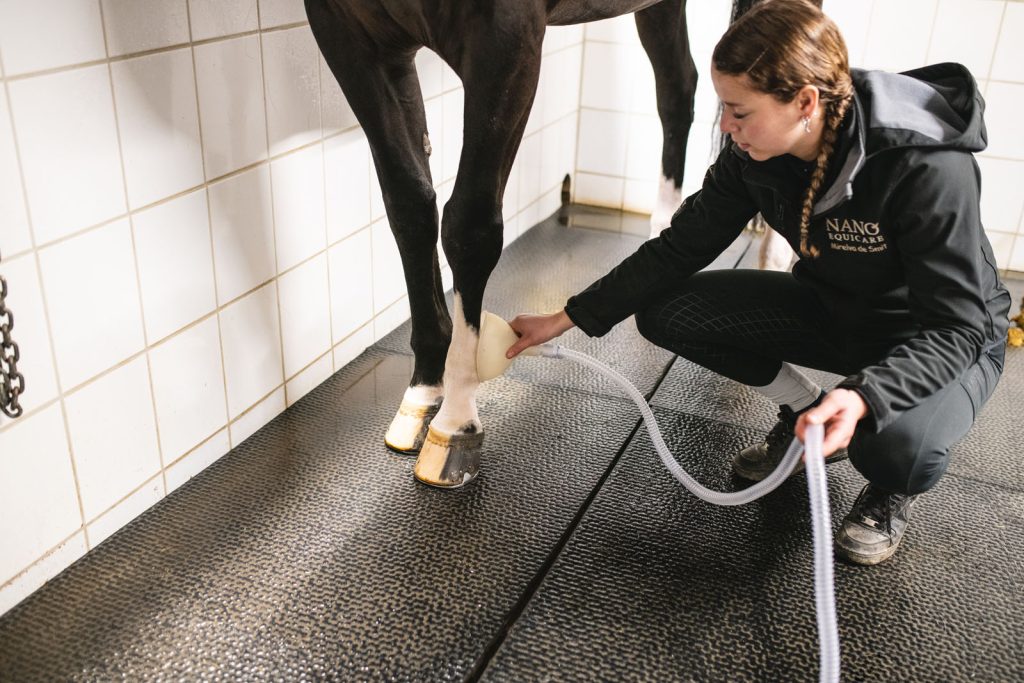Tendon problems are common in horses, whether they are heavily worked or not. These injuries are not always immediately visible, but they can have a major impact on your horse’s wellbeing and usability. In this article, we explain how to recognize tendon issues, what you can do in case of a tendon injury, and which treatment options are available for optimal recovery.
How to Recognize a Tendon Injury in Your Horse
Tendon problems often creep in gradually. Sometimes there is a clear moment of lameness, but more often you’ll notice subtle signals such as:
-
Stiffness when starting to walk
-
A warm or swollen leg
-
Reduced willingness to move
-
Irregularity that comes and goes
A veterinarian can often use an ultrasound to determine the exact type of tendon injury—for example, damage to the flexor tendon or an inflamed tendon sheath. Early recognition is essential for a successful recovery process.
Why Rest Alone Is Not Enough for Tendon Problems
Rest is important for tendon healing, but often not sufficient. Tendons have poor blood supply, which means nutrients have difficulty reaching the injured site. This makes recovery slow and increases the risk of lasting weak spots due to scar tissue. In addition, prolonged stall rest leads to loss of muscle mass and overall condition.
Treatment of Tendon Problems in Horses
In addition to rest, there are various supportive therapies that can speed up or assist recovery:
-
Physiotherapy or Osteopathy:
Helps release surrounding tissue, improve circulation, and restore balance in the body. -
Laser Therapy:
Stimulates cell regeneration and blood flow at the injury site. Scientifically proven and effective for tendon inflammation and small tears. -
Support with Supplements:
Nutrients such as vitamin C, MSM, or hyaluronic acid may help. Note, however, that these must first be absorbed through the gut, which is not always efficient. -
Nano CellCare Therapy:
An innovative treatment in which body-like substances such as hyaluronic acid and minerals from Dead Sea salt are nebulized into ultra-small nanoparticles. These are absorbed through the skin or inhalation and delivered directly to damaged cells. This contributes to faster, deeper, and more natural recovery without stressing the digestive system or requiring injections.
In practice, we regularly see horses with severe tendon problems—even older ones—regain supple, cheerful movement after an intensive Nano CellCare course.

How Long Does Recovery from a Tendon Injury Take?
Recovery time depends on the severity and location of the injury, as well as the type of treatment. On average, tendon recovery takes between 3 and 9 months. By using supportive therapies, this period can be significantly shortened and the risk of relapse reduced.
When Should You Seek Help for Tendon Problems?
Don’t wait too long if you suspect your horse has a tendon injury. The earlier you act, the greater the chance of full recovery. Always consult your veterinarian and consider additional guidance from a therapist specialized in recovery and tendon problems in horses.
Would you like to know if your horse could benefit from internal support with Nano CellCare therapy? Find out here.

